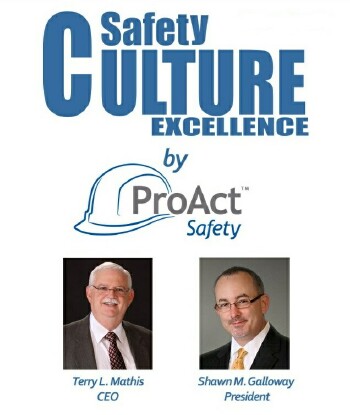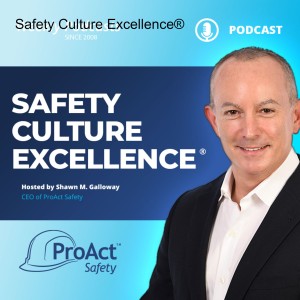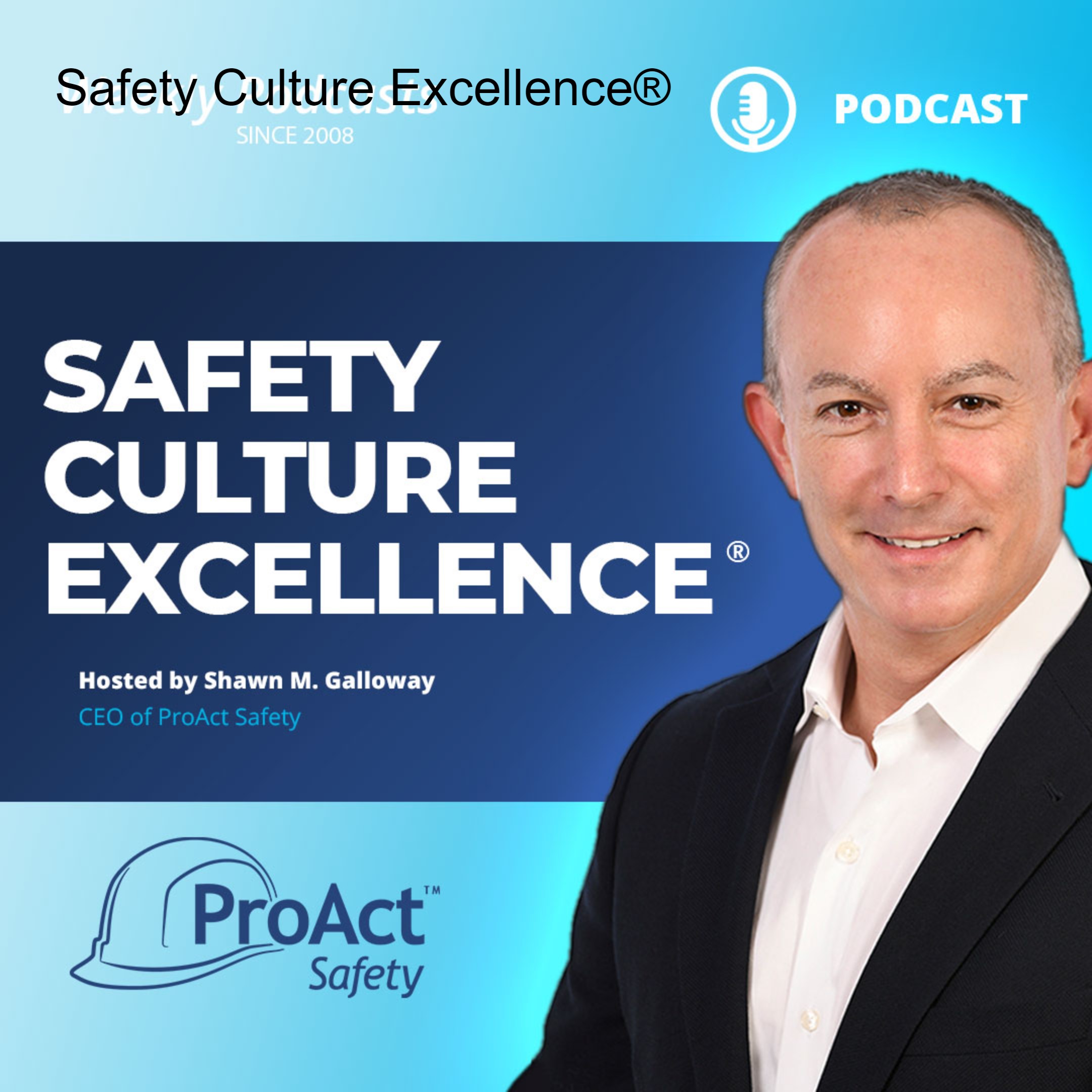Episodes

Monday Jun 29, 2015
394 - How Innovative and Audacious Are Your Safety Meetings?
Monday Jun 29, 2015
Monday Jun 29, 2015


Wednesday Jun 17, 2015
Confrontational Thinking
Wednesday Jun 17, 2015
Wednesday Jun 17, 2015
It is incredible to me how tenaciously old thinking clings to the safety community. I continue to hear pundits assert that confrontation is a key skill of creating a safety culture. Unless you want a confrontational culture, I couldn’t disagree more if they were twice as wrong. So, why do you not want to make confrontation a common skill and a key part of your culture? Because confrontation is a “stopping tool.” If you cling to the old idea that safety is getting workers to “stop taking risks,” then you tend to think this way. Workers get hurt because they take risks. “Workers are the problem with safety. Fix the workers and you will fix safety.”
However, if you can grasp the concept that workers don’t want to get hurt and that they are the customers of your safety programs, then you will think differently. Accidents happen because of risks. Safety needs to help management identify and remove or reduce risks where possible. Safety needs to help workers identify and deal with remaining risks efficiently. Workers need to help each other practice taking precautions around the remaining risks. The key skill of safety is coaching, not confronting. Safety is about starting excellence, not stopping stupid risk taking.
If you continue to think the about safety the way you always have, you will do as you have always done and produce the same results you always have. Get away from confrontational thinking and embrace the concepts of safety excellence.
-Terry L. Mathis
For more insights, visit
www.ProActSafety.com
Terry L. Mathis is the founder and CEO of ProAct Safety, an international safety and performance excellence firm. He is known for his dynamic presentations in the fields of behavioral and cultural safety, leadership, and operational performance, and is a regular speaker at ASSE, NSC, and numerous company and industry conferences. EHS Today listed Terry as a Safety Guru in ‘The 50 People Who Most Influenced EHS three consecutive times. He has been a frequent contributor to industry magazines for over 15 years and is the coauthor of STEPS to Safety Culture Excellence (2013, WILEY).


Monday Jun 08, 2015
391 - Withhold Information and Demotivate
Monday Jun 08, 2015
Monday Jun 08, 2015


Wednesday Jun 03, 2015
Seeing the Whites of Their Eyes
Wednesday Jun 03, 2015
Wednesday Jun 03, 2015
Have you ever looked into the eyes of workers in a safety meeting? In some meetings the eyes light up, in some they gloss over, and in others they roll. If you are creating gloss and/or rolling eyes, you have a great opportunity! Think about it - you already dedicate time to safety meetings. Why not get the maximum return for that time invested?
I know a lot of meetings are mandatory. I know that being forced to do something can take the fun and motivation out of it. But it doesn’t have to be a boring case of grudging compliance. Meetings can be an opportunity to discuss upcoming issues, share expertise from experienced hands to new hires, discuss best practices, or plan an upcoming project. It doesn’t have to be a lecture or sermon on thinking before you act. It can be interactive and engaging with just a little effort and pre-planning.
The key aspects to creating bright-eyed meetings are practicality and participation. Topics that don’t readily apply to real work get eyes rolling. Boring speech-giving presenters or shallow attempts to involve workers make the eyes gloss over. Remember this formula: Practical topics + Engaging delivery = Bright eyes.
-Terry L. Mathis
For more insights, visit
www.ProActSafety.com
Terry L. Mathis is the founder and CEO of ProAct Safety, an international safety and performance excellence firm. He is known for his dynamic presentations in the fields of behavioral and cultural safety, leadership, and operational performance, and is a regular speaker at ASSE, NSC, and numerous company and industry conferences. EHS Today listed Terry as a Safety Guru in ‘The 50 People Who Most Influenced EHS three consecutive times. He has been a frequent contributor to industry magazines for over 15 years and is the coauthor of STEPS to Safety Culture Excellence (2013, WILEY).


Wednesday May 27, 2015
Pipeline Industry's Stance to Improve Reputation
Wednesday May 27, 2015
Wednesday May 27, 2015
The Huffington Post article, “America’s Disastrous History of Pipeline Accidents Shows Why the Keystone Vote Matters” highlighted the pipeline industry’s incident record and stated that on average one significant pipeline incident occurs in the country every 30 hours. The key question to ask is – what is the pipeline industry doing to reduce the number of incidents and lower the risk of harm to the environment and surrounding communities where they operate.
After the 2010 San Bruno pipeline explosion in California and per National Transportation Safety Board’s recommendations, midstream industry leaders in coordination with the American Petroleum Institute (API) gathered and collaborated to develop a recommended practice (RP) for the industry. Known as, API RP 1173 Pipeline Safety Management System (PSMS), it provides guidance for developing and maintaining a comprehensive management system to improve operational safety and decrease the rate of releases and incidents. The PSMS framework defined in API 1173 shares common principles with safety management systems found in other industries such as nuclear, aviation, offshore oil and gas, and refinery and chemical plants. These safety management programs have demonstrated reductions in operational risk, reduced occurrences of incidents, and provided a platform for continuous improvement to achieve operational excellence. Large, integrated energy companies already have such overarching management systems in place that cover pipeline safety, such as an operations management system. However, the standards in API RP 1173 will likely require effort and executive commitment to enhance existing operations management/safety management system to fully meet the API RP 1173 requirements.
While many midstream companies have various programs that address risk management, asset integrity and management of change, a safety management system will provide an integrated management system that cuts through organizational and functional silos to achieve greater transparency and awareness which leads to better decision making and safer operations. Recognizing the significance of leadership accountability and communications to achieve a sustainable and meaningful operations/safety management system, the API RP 1173 devotes significant content to framing the role leadership at all levels plays in ensuring safe and reliable operations.
The final release of API RP 1173 is anticipated next month and is expected to change the way leaders think about their business decisions to a more holistic, systematic approach. For example, the draft version of API RP 1173 states, “Managing the safety of a complex process, as well as simpler systems, requires coordinated actions to address multiple, dynamic activities and circumstances. Pursuing the industry-wide goal of zero incidents requires comprehensive, systematic effort. While process-related incidents are relatively infrequent but can lead to serious consequences.”
While not mandatory to adopt API RP 1173, an operator risks being found negligent for not adopting and following a PSMS consistent with RP 1173 in the event of an incident as it will be considered an industry standard for which pipeline operators to follow.
This has been a guest contribution by Katherine Molly.
 Katherine, Principal of Northhighland, works with executive management and project teams to improve organization processes for safety and reliability, reduce capital program and business process risks, and resolve program/ project crisis and disputes in the energy industries. Supporting owners, contractors, engineers, their legal counsel and sureties, she has led assessment and improvement organization and project programs, enhanced project execution, coalesced conflicting parties, and participated in the settlement/litigation of business and project disputes ranging from $1 million to multi-billion dollars.
Katherine, Principal of Northhighland, works with executive management and project teams to improve organization processes for safety and reliability, reduce capital program and business process risks, and resolve program/ project crisis and disputes in the energy industries. Supporting owners, contractors, engineers, their legal counsel and sureties, she has led assessment and improvement organization and project programs, enhanced project execution, coalesced conflicting parties, and participated in the settlement/litigation of business and project disputes ranging from $1 million to multi-billion dollars.
Monday May 25, 2015
389 - What Is Your Leadership Dash?
Monday May 25, 2015
Monday May 25, 2015


Monday May 04, 2015
386 - Incentives and Rewards: Lazy or Excellent Management?
Monday May 04, 2015
Monday May 04, 2015


Monday Apr 27, 2015
385 - Walking the Talk
Monday Apr 27, 2015
Monday Apr 27, 2015


Wednesday Apr 22, 2015
Factor-Finding Failures
Wednesday Apr 22, 2015
Wednesday Apr 22, 2015
When new safety programs or processes are rolled out unsuccessfully, there has almost always been a failure to determine either the factors necessary for success, the factors that can contribute to failure, or some combination of both. Without a list of the key factors of success and failure, a project launch is a blind affair. This blindness seems more logical if the project appears to be well constructed and has been successful at other organizations or sites in the same organization. Sadly, imitation of success is no guarantee of success.
The reasons for the imitation failing are basically the differences in sites and cultures. A good fit for one site might be a recipe for disaster at another. That is why an analysis of success and failure factors is so necessary. Such an analysis is unique to each culture. It should include a review of past successes and/or failures and the factors that contributed to those; but it should also include simply asking a representative cross-sample of people what they think of the project and what it would take to make it work. Good implementers and change agents have usually learned a lot about such analysis, but can almost always be more thorough if they simply list critical factors to success and failure, and address them in their implementations.
-Terry L. Mathis
For more insights, visit www.ProActSafety.com
Terry L. Mathis is the founder and CEO of ProAct Safety, an international safety and performance excellence firm. He is known for his dynamic presentations in the fields of behavioral and cultural safety, leadership, and operational performance, and is a regular speaker at ASSE, NSC, and numerous company and industry conferences. EHS Today listed Terry as a Safety Guru in ‘The 50 People Who Most Influenced EHS three consecutive times. He has been a frequent contributor to industry magazines for over 15 years and is the coauthor of STEPS to Safety Culture Excellence (2013, WILEY).

Wednesday Apr 08, 2015
Training vs. Education
Wednesday Apr 08, 2015
Wednesday Apr 08, 2015
More and more organizations are using computer-based training (CBT) modules. Most started using them for OSHA-required yearly refresher training. The CBT approach had some advantages: workers could attend individually rather than in a classroom with multiple students and an instructor; the individual training approach caused less disruption of business activities than a classroom approach; the training was self-paced so everyone could move through the materials at their own pace; the modules could include testing for knowledge levels; and the CBT could keep current rosters of who had completed the various modules.
Then organizations expanded the use of CBT into more questionable areas. Along this path, someone forgot that CBT is education; not training. You can impart information via computer but you cannot build manual skills. Relying on CBT to teach manual job skills or even basics such as fire-extinguisher use is only a partial approach. Students end up having knowledge without skills. If the CBTs are followed up with on-the-job training or classroom simulations, the knowledge can begin to be translated into skills. Without such follow-up, CBTs can simply create a false sense of competence that can, and has, resulted in serious safety incidents.
-Terry L. Mathis
For more insights, visit
www.ProActSafety.com
Terry L. Mathis is the founder and CEO of ProAct Safety, an international safety and performance excellence firm. He is known for his dynamic presentations in the fields of behavioral and cultural safety, leadership, and operational performance, and is a regular speaker at ASSE, NSC, and numerous company and industry conferences. EHS Today listed Terry as a Safety Guru in ‘The 50 People Who Most Influenced EHS three consecutive times. He has been a frequent contributor to industry magazines for over 15 years and is the coauthor of STEPS to Safety Culture Excellence (2013, WILEY).


